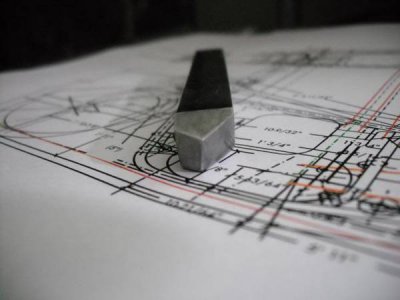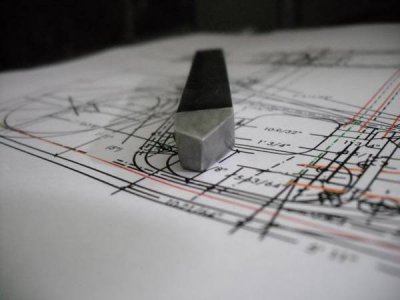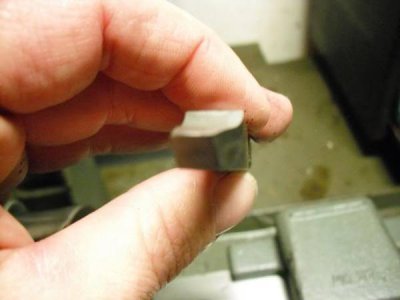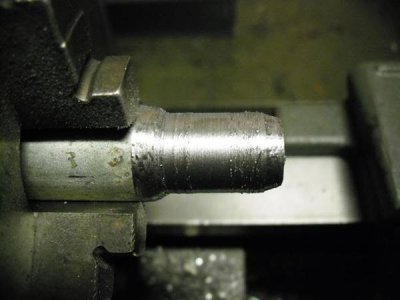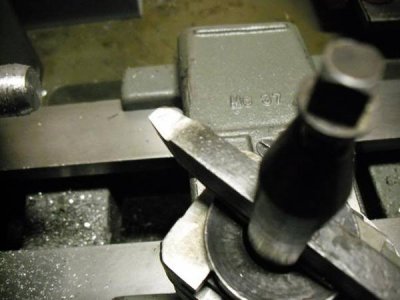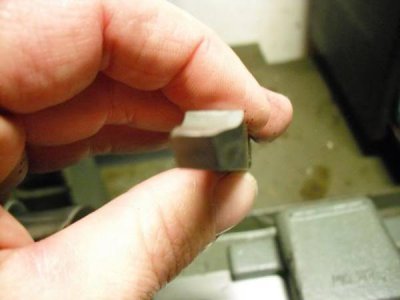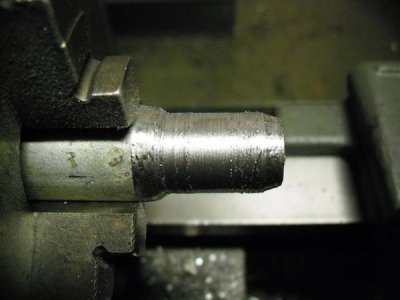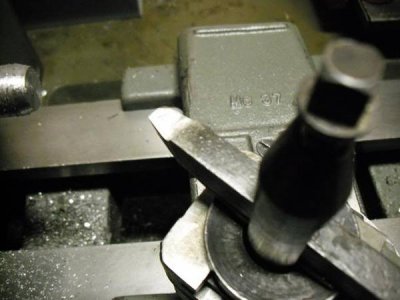Pipehack,
Assuming you are cutting with the tool set to center height and your tool is held perpendicular to the work then the key problem seems to be that you are using negative rake on your tool. Negative rake means the top surface of the tool slopes down from the back of the ground part of the tool to the very tip. This results in very high cutting forces. Negative rake tools work but require a rigid lathe and more horsepower than an Atlas has, and you will have much better results with a positive rake tool. The bottom line is that your tool geometry is off and will work fine once you fix the rake angles.
The are two kinds of rake: side rake and back rake. Side rake provides a path for chip clearance and forms one half of the critical side cutting edge. Back rake determines where the cutting forces are focused; the greater the back rake is the more the forces focus at the tip. Like the relief angles, rake angles vary with the material being cut and can be found on any standard cutting tool table. These rake angles are important in reducing cutting forces and cutting temperatures. Like the relief angles getting them right is more important than most folks think when using a smaller lathe.
Go back to your belt sander and be sure the relief angles are 8-10 degrees. To do this, set the angle of the work table to 8-10 degrees relative to the belt and grind the side and end to the angles you want. For a general purpose tool mark off 60% of the width of the bit and grind the left side of the bit to take off that 60%.
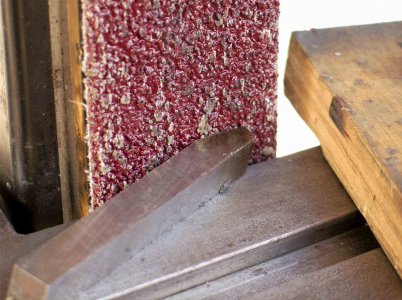
Then grind the end of the tool so that the angle formed at the tip of the tool is just under 90 degrees - say 80-85 degrees or so - this will allow you to cut into corners without the end rubbing.
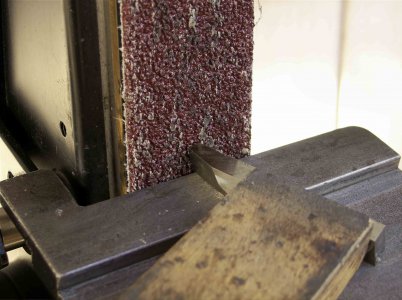
Now, without touching the table angle, turn the tool bit onto its right side; the side cutting edge will be facing up. You will now grind the rake angles. Angle the bit so that it is about 10 degrees to the belt, then just push it straight into the belt. Be sure to maintain the 10 degree angle and grind until the top of the tool is ground clear to the top edge, then stop.
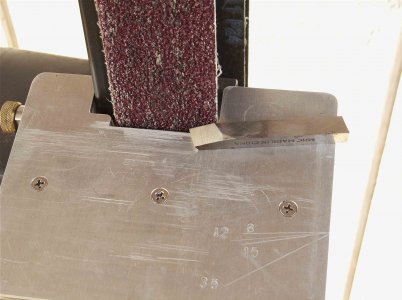
Now form a nose radius of about 1/64" - 1/32" and be sure the nose radius follows that angle formed between the side and end faces of the tool tip. Use a diamond stone for this if you have one. Finally, hone the side, end and top surfaces and you are ready to cut.
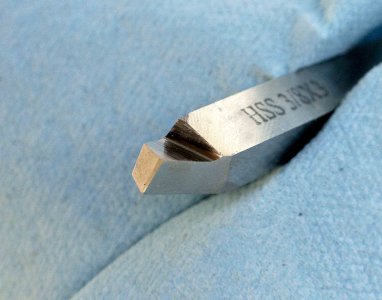
Put the tool in your post and align the tool so it is perpendicular to the work being cut. It should cut just fine. If you need to cut deeper and encounter chatter then angle the tool a bit toward the chuck a few degrees. If you want a better finish then angle the tool a few degrees toward the tailstock. All of this is basic lathe work and you'll catch on very quickly.
Stay with it. HSS on your lathe should work extremely well once you get the hang of grinding tools.




